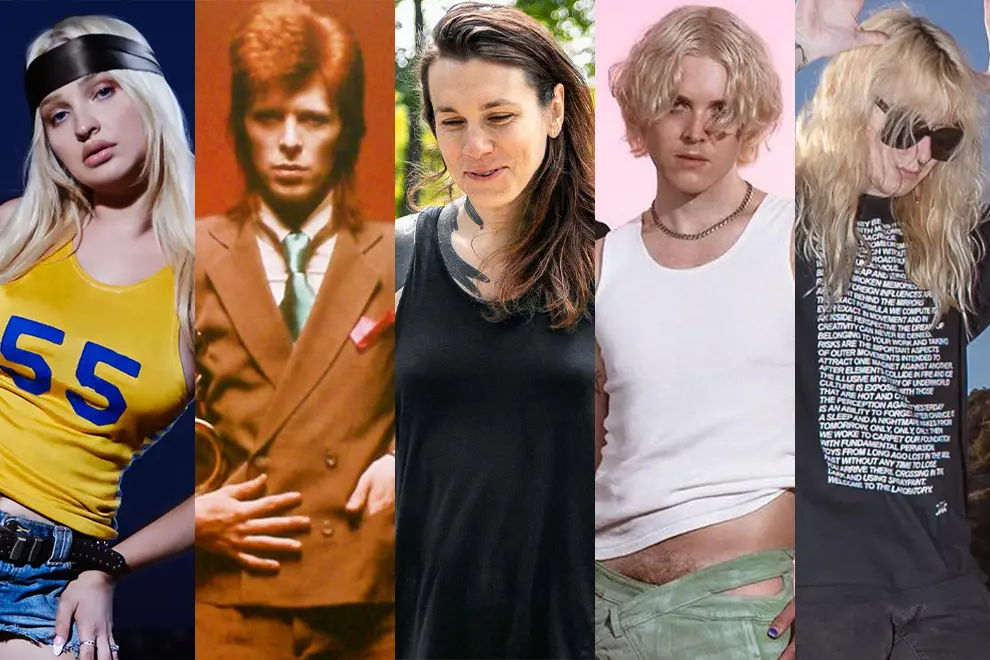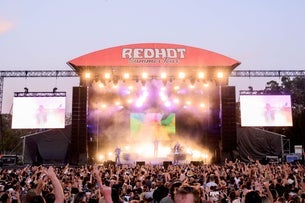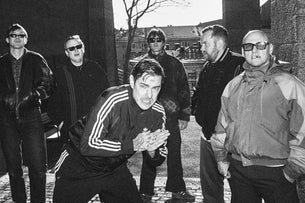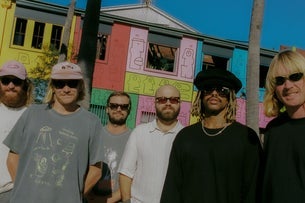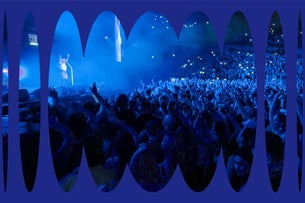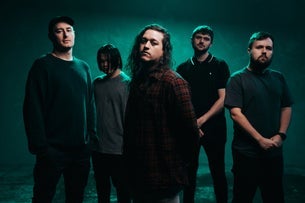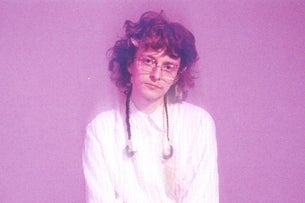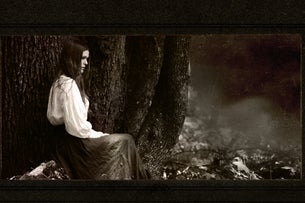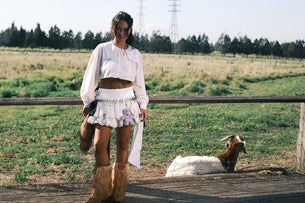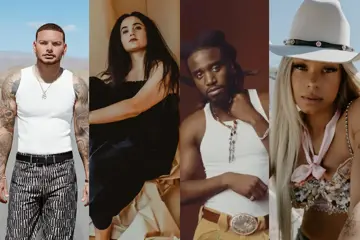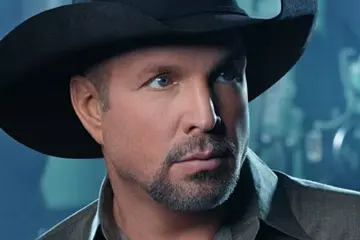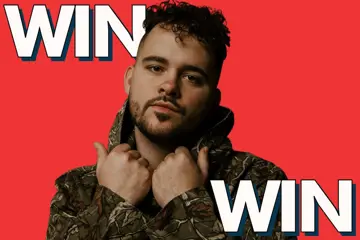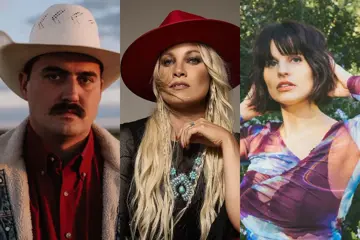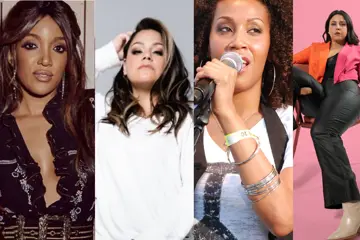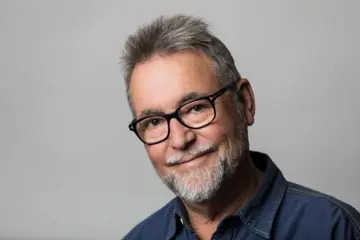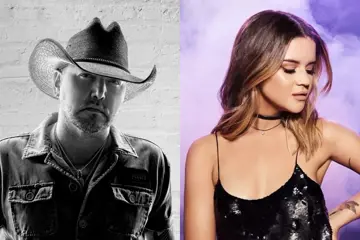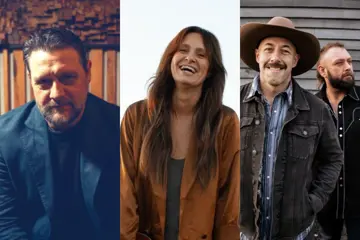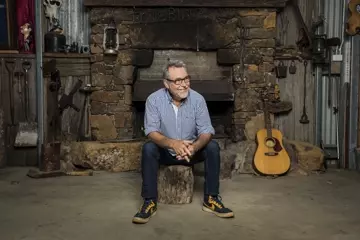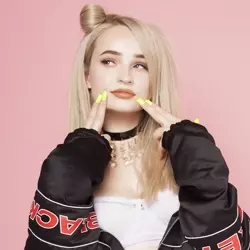 Kim Petras
Kim PetrasOver the past few years – especially thus far in 2023 – it’s been hard to stay hopeful as a queer person. The political landscape is still plagued by geriatric bigots with draconian views on the LGBTQIA+ community, and they seem to be as keen as ever to spark a genocide of our peoples. We’re particularly seeing a grim surge in the mainstream prevalence of anti-trans sentiment; when avowed TERFs and neo-Nazis can happily link arms in the streets of Naarm/Melbourne while VicPol officers bash innocent queer people, you know things are pretty fucked.
Seemingly in spite of that, queer art is absolutely thriving in the music world. This year alone, we’ve born witness to some watershed moments in queer music history, first on February 5 when Kim Petras became the first openly transgender woman honoured with a Grammy Award. Accepting the trophy for Best Pop Duo/Group Performance alongside Sam Smith – also the first non-binary person to win a Grammy – Petras paid tribute to “all the incredible transgender legends before [her]”, notably citing her late friend and hyperpop trailblazer Sophie.
Just a week prior to the moment (on January 27), Smith released their third album Gloria. It charted at #1 in Australia, Ireland and the UK, and made the Top Ten in six other territories. The same day, Taylor Swift released her self-directed music video for Lavender Haze, starring trans actor Laith Ashley as her love interest. A few months later, Boygenius (the indie-rock supergroup of Julien Baker, Phoebe Bridgers and Lucy Dacus) captured the zeitgeist with their debut album The Record – an instant classic irremovable from its sapphic themes and aesthetic.
Join our community with our FREE weekly newsletter
This kind of unapologetic, open-armed embracing of queerness in art has, to say the very least, been a long time coming. It was exactly 100 years ago, in 1923, that blues legends Ma Rainey and Bessie Smith both started making waves with songs that featured bold themes of same-sex attraction. Just shy of 50 years later, in 1972, Jobriath became the first openly gay rock artist signed to a major label (that being the still-active Elektra). Petras was also the first openly trans artist to join a major when she signed to Republic in 2021.
Even those major label pioneers had footsteps to follow in – Little Richard and Billy Wright walked so Jobriath could run, for example – and although Petras’ Grammy win earlier this year marked a truly historic moment for the trans community, she wasn’t actually the first doll honoured on that stage; that would be Wendy Carlos, who won three Grammys for her Switched-On Bach album in 1970 (nine years before she came out publicly). Kristen S. Hé recently penned this phenomenal essay on Carlos’ history for Xtra.
Queer art also thrived in underground scenes. Olivia Records was one formative label for lesbian artists in the ‘70s and ‘80s, releasing more than 40 sapphic classics over some two decades. In the early ‘80s, bands like The Dicks, Big Boys and The Apostles paved the way for the rise of queer hardcore (aka queercore). And the importance of Broadway in shaping pop aesthetics cannot be overstated – without overtly queer musicals like Cabaret and A Chorus Line (not to mention The Rocky Horror Picture Show in 1975), there would be none of the bold, flamboyant pomp we so often link with the kings and queens of queer pop history.
It was also in the late ‘70s and early ‘80s that queerness started taking hold of the mainstream pop narrative. Right until his death in 2013, David Bowie was seen as a gender-bending icon who fearlessly pushed the envelope for queer themes in his songs, music videos and films. His 1979 track Boys Keep Swinging (and its accompanying film clip) is particularly notable for its tongue-in-cheek jabs at patriarchal cisheteronormativity – but even before then, he’d been loud and proud with his queerness, making it an integral part of his creative output, since 1972.
Similarly influential were the likes of Prince, Lou Reed, Freddie Mercury and Boy George, who all fought the status quo on what it meant to present as and act like a cisgender man in the public eye. They were defiant in their androgynous fashion, giving mainstream attention to the prismatic genderfuck previously relegated to the underground (where the likes of the New York Dolls, Marc Bolan and Phranc were all no less than legendary).
Equally as influential – and perhaps even more insofar as her influence on pop as a whole – is Madonna. Her still-iconic wardrobes of the ‘80s and ‘90s were heavily influenced by drag queens like The Cockettes and William Dorsey Swann, and the smoky post-disco sound of hits like Express Yourself, Like A Prayer and Vogue has its roots in the underground queer house scene that rose to stature in the late ‘70s. Madonna herself has always acknowledged the influence she’s drawn from her queer elders, saying in a 2010 interview with Ellen DeGeneres (herself notable as the first open lesbian to play a lesbian character on TV) that she “wouldn't have a career if it weren't for the gay community”.
Though no longer so heavily dominant in the mainstream, queer themes continued defining core moments in the music of the ‘90s. Melissa Etheridge released her lesbian anthem Come To My Window in 1993 (and used its success to campaign for queer rights), while Blur’s 1994 hit Girls & Boys explored androgyny and bisexuality. Placebo also flew the flag for both of those camps (and continue to even now), and even late Nirvana frontman Kurt Cobain always revelled in the opportunity to toy with gender norms. Judas Priest frontman Rob Halford made heavy metal history in 1998, too, when he came out as gay on MTV.
With a strong foundation of influences laid across the core pop and rock scenes, queer art once again came to dominate in the late 2000s and early ‘10s. Chart-smashing heavyweights like Lady Gaga and Christina Aguilera were heavily inspired by Madonna’s queer-forward aesthetics, while acts like Tegan And Sara, Mika, the Scissor Sisters and The Gossip all ensured the indie scene was well represented. In 2012, Adam Lambert became the first openly gay artist to top the Billboard 200 chart with his second album, Trespassing.
2012 also came with a milestone for trans representation in rock and punk, when Against Me! frontwoman Laura Jane Grace came out as a trans woman. Two years later, the band released Transgender Dysphoria Blues, one of the most important and impactful pieces of trans art ever released – it’s squarely thanks to Grace and that album that tens of thousands of trans people (including myself) were able to quantify and take the first steps in exploring their identities. Grace would dig even deeper into the well for Against Me!’s seventh (and seemingly final) album, 2016’s Shape Shift With Me, which tackled sex and existentialism – and how the two intersect – from a trans perspective.
Just shy of a decade on from Transgender Dysphoria Blues, punk virtually belongs to the queer and trans communities. Acts like Scowl, Worriers, Destroy Boys and The HIRS Collective are among the biggest active names in the scene, and during their two-year tenure spanning 2014 to ’16, G.L.O.S.S. earned the kind of unprecedented acclaim that nigh-on deified them (which, ironically, led to their breakup). Even the disgraced PWR BTTM should be acknowledged, controversial as they remain, for the ways they amplified queer and non-cis narratives on their two albums (2015’s Ugly Cherries and 2017’s Pageant).
Veering back into the mainstream, we obviously have Petras repping the pastel pink, blue and white in the world of bubblegum pop. Ethel Cain is among her contemporaries on the more heady and brooding side of the pop spectrum, as are Ezra Furman, John-Allison Weiss and Cavetown with their more artsy, indie-leaning output.
On the complete opposite end of the spectrum, though, we’ve got hyperpop – the closest possible thing there could be to an actual trans genre. Aside from blurring the lines and pushing the boundaries of what sounds can (or even should) work together, the trend of sharply pitch-shifted, violently AutoTune’d vocals started with trans women eager to avoid vocal dysphoria. Among the genre’s pioneers are the aforementioned Sophie (who died in 2021), 100 Gecs, Dorian Electra and Slayyyter (the lattermost of whom isn’t trans, but is queer).
As a whole, queerness is now being embraced ubiquitously not just as an integral part of the mainstream consensus, but the very core of it. Some of the biggest sapphic anthems of all time have come from Gen Z luminaries like Girl In Red (Girls), King Princess (Pussy Is God), Hayley Kiyoko (Girls Like Girls), Kehlani (Honey), Beabadoobee (She Plays Bass) and Clairo (Sofia). Rappers like Kevin Abstract (formerly of Brockhampton) and Lil Nas X have also helped to make the rap scene more inclusive of openly, loudly and proudly queer artists – and Honey Dijon is rightfully cited as a trans hip-hop heroine.
You may have noticed that until this point, I’ve completely ignored the efforts of Australian artists. But that’s not because they aren’t worth celebrating – it’s the opposite, in fact: Australian music is so inescapably queer at the moment, it beckons praise on its own merits.
Alex The Astronaut, Troye Sivan, Cub Sport, Peach PRC, Darren Hayes (formerly of Savage Garden), Paul Mac, Sia, Jess Origliasso (of The Veronicas), Georgia Maq (formerly of Camp Cope) and Missy Higgins are among some of our biggest queer pop exports, while Courtney Barnett, Alex Lahey and Ruby Fields – as well as members of Totty, VOIID, The Beautiful Monument, Teenage Joans, Moaning Lisa and Press Club – fly the rainbow flag from within the rock world.
In way of prominent trans and non-binary artists, some of the most notable include Romy Vager (of RVG, TheMusic’s recent cover stars), Milla Holland (of Private Function), Heather Riley (of Cry Club), Anna Ryan (of Teen Jesus And The Jean Teasers), Dan Steinert (of TOWNS), Tash Sultana, G Flip, Montaigne, Flowerkid, Jen Cloher, Kee’ahn, Mo’Ju, Kira Puru, Simona Castricum and Katie Dey.
Even in more underground circles, acts like Cherish, Nonnie, The Last Martyr, Final Girls, Blake Williams, The Lazy Susans, Those Who Dream and Queerbait are ensuring local punk and rock scenes remain trans as hell, while pop, indie and beyond have the likes of Egoism, FVNERAL, Hallie, Honeybeam, Mani Blü, Uboa, Jesswar, Wolfjay and Dylan Atlantis to champion. (Shameless plug: I recently started a publicly accessible spreadsheet of non-cis artists in Australian music).
There’s a good chance you’d known about some of the artists in those last three paragraphs, but you didn’t know that they were queer and/or trans. And therein lies the beauty of the current queer pop zeitgeist: we’re fortunate to live in a climate where those artists can shine and thrive and build successful brands entirely separate to their queer identities.
For the most part, they’re artists first and “queer artists” second – and when that isn’t the case, it’s because they’ve purposely chosen to centre queerness in their art. While critical to their identities, their queerness isn’t being used by critics to paint over their polychromatic complexities – whether musically, in their storytelling, or as people altogether – nor is it being used to sell shirts or market tours.
We’ve still got a ways to go in navigating an evolving culture of acceptance – cis, white queerness is still widely viewed as the most “palatable” queerness for mainstream audiences – but especially now, as we use music more and more to fight mounting opposition to our fundamental existence, there’s hope that intersectionality can be more adequately striven for.
Black queerness in particular has always been a touchstone in our shaping of mainstream musical culture, from the blues to folk to modern pop; before Madonna, it was Grace Jones revelling in that loveably gaudy drag-pop chic.
To that end, we’re hopeful our queer elders and foremothers won’t be forgotten. Because while queerness is more widely embraced than ever in music – and the broader pop-culture zeitgeist altogether – it wasn’t adopted by the landscape. Queerness has always been at the heart of popular music; it hasn’t become a key element in the mainstream consensus, but merely one we can be more vocal about as we progressively wash ourselves of antiquated political values.
Without queerness, there would be no pop music, period. Queerness is fundamental to expression, progression, profession, innovation, tastemaking and tenacity. Queerness is eternal.
